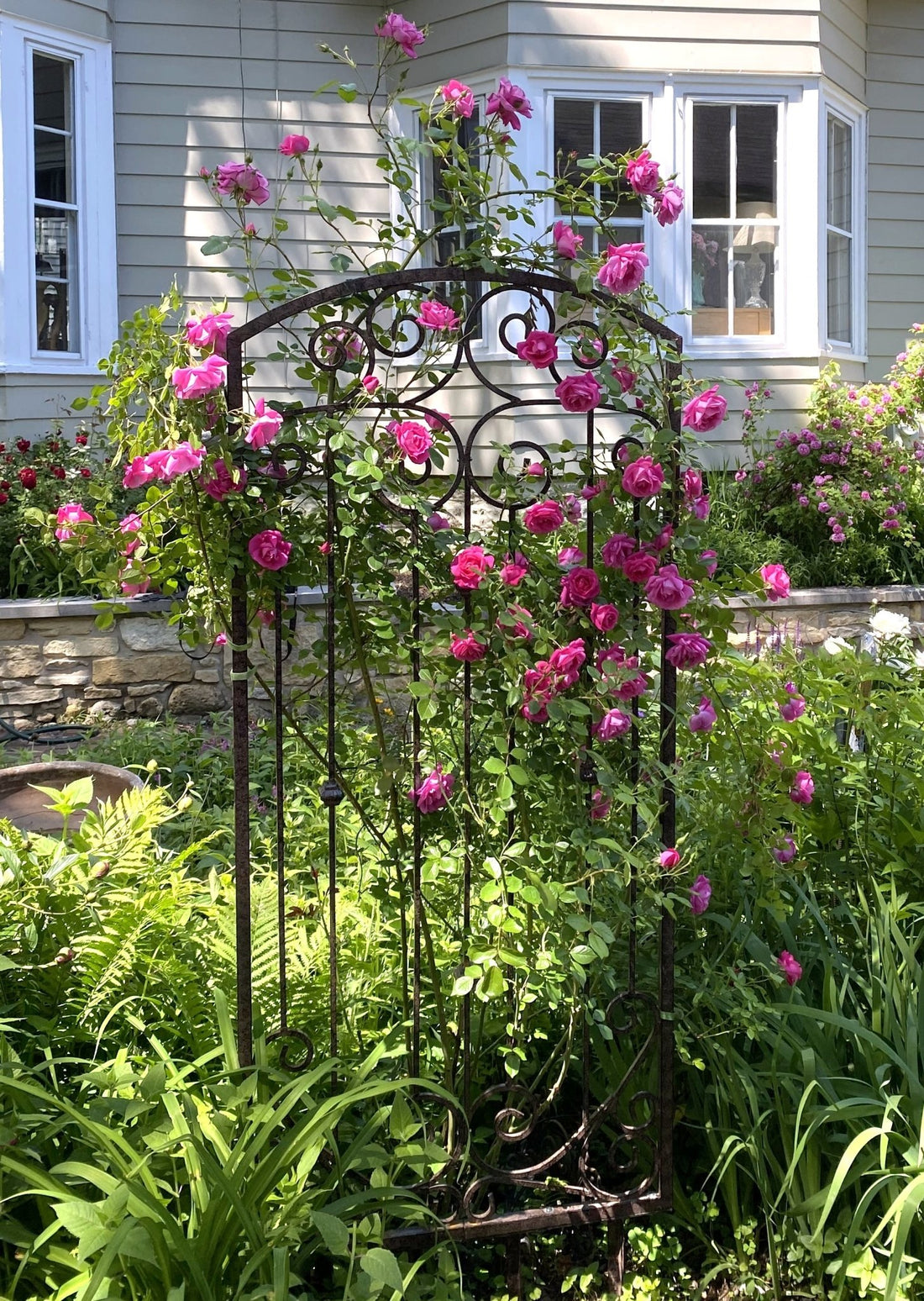What is a Trellis?
A garden trellis is a sturdy and decorative structure typically made of materials like iron, steel, or aluminum. It's designed to support climbing plants such as vines, flowers, or vegetables, providing them with a framework to grow vertically. Trellises come in various designs and sizes, adding both functionality and aesthetic appeal to garden spaces. They can be freestanding or attached to walls or fences, offering versatility in garden layout and design.
What is a garden trellis used for?
Most people use a trellis primarily for supporting climbing plants such as vines, flowers, or vegetables in their gardens. Trellises provide a structure for these plants to grow vertically, maximizing space and creating visual interest. Additionally, trellises can serve as decorative elements in indoor or outdoor spaces, adding aesthetic appeal to gardens, patios, or balconies. Some may also use trellises as privacy screens in their backyard or to delineate different areas within the garden. Overall, trellises offer both practical and decorative benefits for gardeners and outdoor enthusiasts.
What is the difference between a pergola and a trellis?
A trellis is typically a latticework structure with the primary function of providing support for climbing plants, such as vines, flowers, or vegetables. Trellises can help maximize growing space and add visual interest to outdoor spaces. They are usually smaller in scale and can be freestanding or attached to walls, fences, or other structures.
A pergola is a larger, more substantial architectural structure consisting of vertical posts or columns supporting crossbeams and an open roof similar in style to an arbor archway. Pergolas are often designed to create defined outdoor living spaces, provide shade, and enhance the aesthetic appeal of a garden or patio. They can be used as a framework for climbing plants, but their primary function is to provide a shaded area for seating, dining, or relaxation.
What is the difference between a lattice and a trellis?
A lattice is typically a framework consisting of intersecting strips or slats arranged in a decorative crisscross pattern. Lattices are commonly used as privacy screens, fencing panels, or decorative accents in gardens, porches, or outdoor spaces. A lattice usually does not provide direct support for climbing plants but may serve as a backdrop for them.
A trellis is a framework designed specifically to support climbing plants by providing them with a structure to cling or twine onto as they grow. Trellises come in different shapes and sizes and are often placed vertically against walls, fences, or freestanding in gardens to support vines, flowers, or vegetables.
While a lattice may serve decorative or privacy purposes, a trellis has a more functional role in facilitating plant growth and maximizing gardening space.
Where should a trellis be placed in a garden?
The placement of your trellis depends on various factors such as the type of plants you intend to grow, the layout of your garden or yard, and your aesthetic preferences. Here are some general guidelines to consider when deciding where to place your trellis.
Sunlight Exposure:
Most climbing plants require ample sunlight to thrive. Place your trellis in an area of your garden that receives sufficient sunlight throughout the day, ideally facing south or west for maximum exposure.
Air Circulation:
Ensure that there is adequate air circulation around the trellis to prevent the buildup of moisture and reduce the risk of fungal diseases. Avoid placing it in a cramped or enclosed space where air may stagnate.
Proximity to Structures:
If you're installing a trellis against a wall or fence, make sure there is enough space between the structure and the trellis to allow room for plant growth and maintenance. Avoid placing it too close to buildings or other structures that could obstruct airflow or access. Trellis wall mounting brackets assist in maintaining distance between your trellis and your mounting surface.
Support Structure:
Most trellises require anchoring support, choose a location where you can easily secure it to the ground or an existing structure such as a fence or pergola. Ensure that the soil is stable and capable of supporting the weight of the trellis and the plants.
Visibility and Aesthetics:
Consider the visual impact of the trellis placement on your garden's overall design and aesthetic. Place it in a prominent location where it can serve as a focal point or complement other elements of your landscaping.
Accessibility:
Ensure that your trellis is easily accessible for planting, pruning, and maintenance tasks. Avoid placing it in hard-to-reach areas that may make it challenging to tend to your plants.
By considering these factors and assessing your specific gardening needs, you can determine the optimal placement for your trellis to create a beautiful and functional garden space.
What is the benefit of trellis?
Incorporating trellises into your garden design offers numerous benefits beyond just structural support for climbing plants.
1. Enhanced Sunlight Exposure:
Trellises provide climbing plants with better access to sunlight by elevating them off the ground and into direct sunlight. This increased exposure helps plants photosynthesize more efficiently and promotes healthier growth.
2. Pollinator-Friendly Design:
By creating a vertical structure for plants to climb, trellises offer easy access for pollinators like bees, butterflies, and hummingbirds. This accessibility encourages pollination, leading to better fruit set and higher yields in your garden.
3. Reduced Risk of Fungal Disease:
Improved air circulation around plants grown on trellises reduces humidity levels and minimizes the risk of fungal diseases such as powdery mildew and mold. This enhanced airflow keeps plants dry and promotes overall plant health.
4. Maximizes Growing Space:
Vertical gardening with trellises maximizes the use of available space in your garden. By training plants to grow upwards rather than sprawling outwards, you can grow more plants in a smaller footprint, making efficient use of limited garden space.
5. Versatile and Aesthetically Pleasing:
Trellises come in a variety of styles, materials, and designs, allowing you to choose options that complement your garden's aesthetic and suit your gardening needs. Whether you prefer a rustic wooden trellis or a modern metal design, there's a trellis to suit every garden style and preference.
From promoting healthy growth to enhancing the visual appeal of your garden, trellises are versatile additions that can transform any outdoor space into a thriving and beautiful garden oasis.

